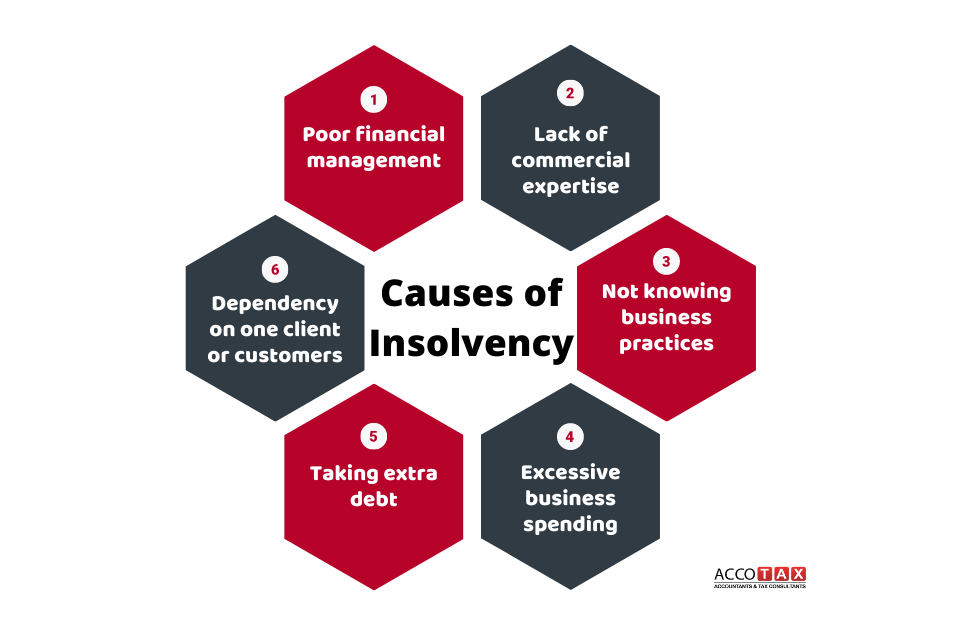Insolvency Practitioner for Dummies
Insolvency Practitioner for Dummies
Blog Article
Insolvency Practitioner Can Be Fun For Everyone
Table of ContentsSome Ideas on Insolvency Practitioner You Should KnowThe Greatest Guide To Insolvency PractitionerInsolvency Practitioner Things To Know Before You BuyInsolvency Practitioner - TruthsThe 9-Minute Rule for Insolvency PractitionerOur Insolvency Practitioner DiariesFacts About Insolvency Practitioner Revealed
Insurance coverage is monitored and regulated by state insurance departments, and among their primary goals is securing insurance policy holders from the threat of a firm in monetary distress. When a business enters a duration of economic trouble and is incapable to meet its obligations, the insurance coverage commissioner in the business's home state launches a processdictated by the laws of the statewhereby initiatives are made to help the business restore its monetary footing.If it is figured out that the business can not be refurbished, the company is declared insolvent, and the commissioner will ask the state court to get the liquidation of the business. The insurance policy commissioner, either assigned by the governor or chosen, heads the state insurance policy department and displays and regulates insurance coverage activity within the state.
By acquiring control of a firm, the commissioner (or the insurance policy department) is, by legislation, the rehabilitator or liquidator of the business. In this capacity, the commissioner or department takes control of the firm's procedures. Rather than do so directly, the commissioner might retain a special deputy receiver to manage the business's activities.
The Buzz on Insolvency Practitioner
The receiver manages an audit of the business's properties and liabilities and administers the estate of the business. In doing so, the receiver seeks to make best use of the company's possessions, move them to money, and after that distribute that money to creditors having valid claims against the insurance company according to payment top priorities defined by state law (in all states, insurance holders are concern complaintants whose claims are paid before those of general creditors).
All insurance provider (with limited exemptions) accredited to sell life or medical insurance or annuities in a state need to be members of that state's warranty organization. The guaranty organization accepts the commissioner and the receiver in pre-liquidation planning. As soon as the liquidation is ordered, the warranty organization gives insurance coverage to the business's insurance holders that are state residents (up to the degrees specified by state lawssee listed below; any kind of advantage amounts over the guaranty asociation advantage levels become cases against the company's continuing to be possessions).
Excitement About Insolvency Practitioner
The above protection degrees apply independently for each insolvent insurer. [Back] When an insurer falls short and there is a deficiency of funds needed to meet the responsibilities to insurance holders, state warranty associations are triggered. Guaranty associations have two primary resources of funding when giving insurance coverage to insurance holders. Guaranty organizations have subrogation legal rights to an in proportion share of the properties continuing to be in the failed insurer.
Second, insurers doing business in that state are evaluated a share of the amount needed to satisfy the portion of the guaranty associations' protected cases not or else moneyed with estate possessions. The amount insurance companies are analyzed is based upon the quantity of costs that they collect in that state. [Back] The National Company of Life and Wellness Insurance Warranty Organizations (NOLHGA) is comprised of the life and medical insurance guaranty associations of all 50 states and the Area of Columbia.
NOLHGA establishes a job pressure of representative warranty organizations to function with the insurance coverage commissioner to develop a strategy to protect policyholders. For additional information on NOLHGA's function at the same time, see "What Is NOLHGA?" and "The Safeguard at the office." [Back]
3 Easy Facts About Insolvency Practitioner Explained

Anticipating security by aiding you choose the right consumers and the best markets to prevent negative financial obligation in the first place, many thanks to intense economic analysis. Extensive market intelligence, providing you with 360-degree presence on organization fields and putting in jeopardy difficulties. It would certainly be a simplification to think a trade debt insurance coverage begins and ends with costs and pay-outs.
:max_bytes(150000):strip_icc()/accountinginsolvency_definition_final_primary_1013-ec9f30044d93461fb78191b77bbcbd17.jpg)
The Basic Principles Of Insolvency Practitioner
It can cause task losses, possession sales, and even insolvency. It is very important to comprehend how company bankruptcy works and how it can impact your service. Why does a company get in into insolvency? There are a variety of reasons that a firm may enter right into insolvency. The most typical factor is that the business is not able to pay its financial obligations as they fall due.
Various other factors for insolvency include fraudulence, sites mismanagement, and unexpected expenses. Insolvency can additionally lead to job losses and the closure of services.
Everything about Insolvency Practitioner
This can have severe effects for the firm, its stakeholders, lenders and the economy. The company may be forced to offer possessions, gave up personnel or also shut down. This can have a knock-on effect on the local community and the economic climate in its entirety. Financial institutions might be left out of pocket and the firm's shareholders might see their investment go away.
This can happen for a number of reasons, including bad economic monitoring, unanticipated prices, or a modification in the marketplace. If a business is insolvent, it may be compelled to shut down or sell off properties to pay creditors. This can have a major influence on business, staff members, and shareholders.
Why does a company enter navigate to this site right into bankruptcy? There are a number of reasons why a company might get in right into insolvency.
7 Easy Facts About Insolvency Practitioner Described
Other factors for bankruptcy include scams, mismanagement, and unexpected prices. Bankruptcy can also lead to task losses and the closure of businesses.
The company may be forced to sell possessions, lay off team or also shut down. Creditors might be left out of pocket and the company's investors might see their financial investment vanish.
Report this page